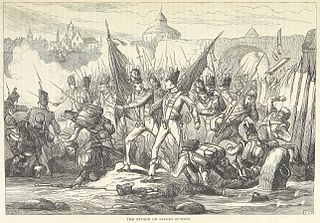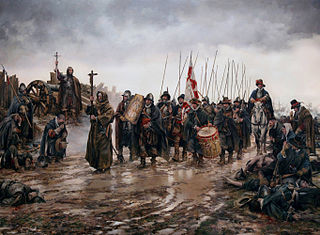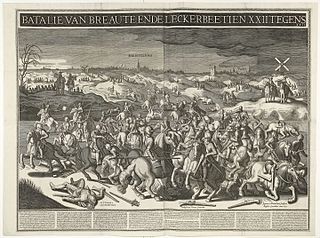 W
WThe Siege of Bergen op Zoom was a siege that took place during the Eighty Years' War and the Anglo–Spanish War between September 23 - November 13, 1588. The siege was between a besieged Anglo-Dutch force under Thomas Morgan and Peregrine Bertie and a Spanish besieging force under famed commander Alexander Farnese, the Duke of Parma. An English officer Grimstone claimed to be a disaffected Catholic, had set up a trap during which a large Spanish assault was then bloodily repulsed. An Anglo-Dutch relief column under the command Maurice of Orange soon after arrived and forced the Duke of Parma to retreat, thus ending the siege.
 W
WThe Siege of Bergen op Zoom (1622) was a siege during the Eighty Years' War that took place from 18 July to 2 October 1622. The Spanish general Ambrosio Spinola laid siege to the Dutch city of Bergen op Zoom.
 W
WThe Siege of Bergen op Zoom took place during the Austrian War of Succession, when a French army, under the command of Lowendal and the overall direction of Marshal Maurice de Saxe, laid siege and captured the strategic Dutch border fortress of Bergen op Zoom on the border of Brabant and Zeeland in 1747. The fortress was defended by Dutch, Austrians, British, Hanoverians and Hessians that supported the Pragmatic Sanction.
 W
WThe Siege of Bergen op Zoom, took place during the War of the Sixth Coalition between a British force led by Thomas Graham, 1st Baron Lynedoch and a French garrison under Guilin Laurent Bizanet and Jean-Jacques Ambert. The initial British assault force seized part of the defences, but a well-managed French counterattack compelled much of the assault force to surrender. Bergen op Zoom is a port in the Netherlands about 70 kilometres (43 mi) south of Rotterdam and 40 kilometres (25 mi) north of Antwerp in Belgium.
 W
WThe Miracle of Empel was an unexpected Spanish victory on 8 December 1585 near Empel, in the Netherlands, as part of the Eighty Years' War, in which a surrounded Spanish force miraculously won against an enemy who exceeded them in number.
 W
WThe Battle of Lekkerbeetje or Lekkerbeetken was a cavalry duel fought by pre-arrangement on Vughterheide near 's-Hertogenbosch, North Brabant, between 22 Brabantine cavalrymen loyal to Albert VII, Archduke of Austria, garrisoned in 's-Hertogenbosch, and 22 French cavalrymen serving in the army of the Dutch Republic.
 W
WOperation Market Garden was a failed World War II military operation fought in the Netherlands from 17 to 25 September 1944. It was the brainchild of Field Marshal Sir Bernard Law Montgomery and strongly supported by Winston Churchill and Franklin Roosevelt. The airborne part of the operation was undertaken by the First Allied Airborne Army with the land operation by XXX Corps of the British Second Army. The objective was to create a 64 mi (103 km) salient into German territory with a bridgehead over the River Rhine, creating an Allied invasion route into northern Germany. This was to be achieved by seizing a series of nine bridges by Airborne forces with land forces swiftly following over the bridges. The operation succeeded in liberating the Dutch cities of Eindhoven and Nijmegen along with many towns, creating a 60 mi (97 km) salient into German-held territory limiting V-2 rocket launching sites. It failed, however, to secure a bridgehead over the Rhine, with the advance being halted at the river.